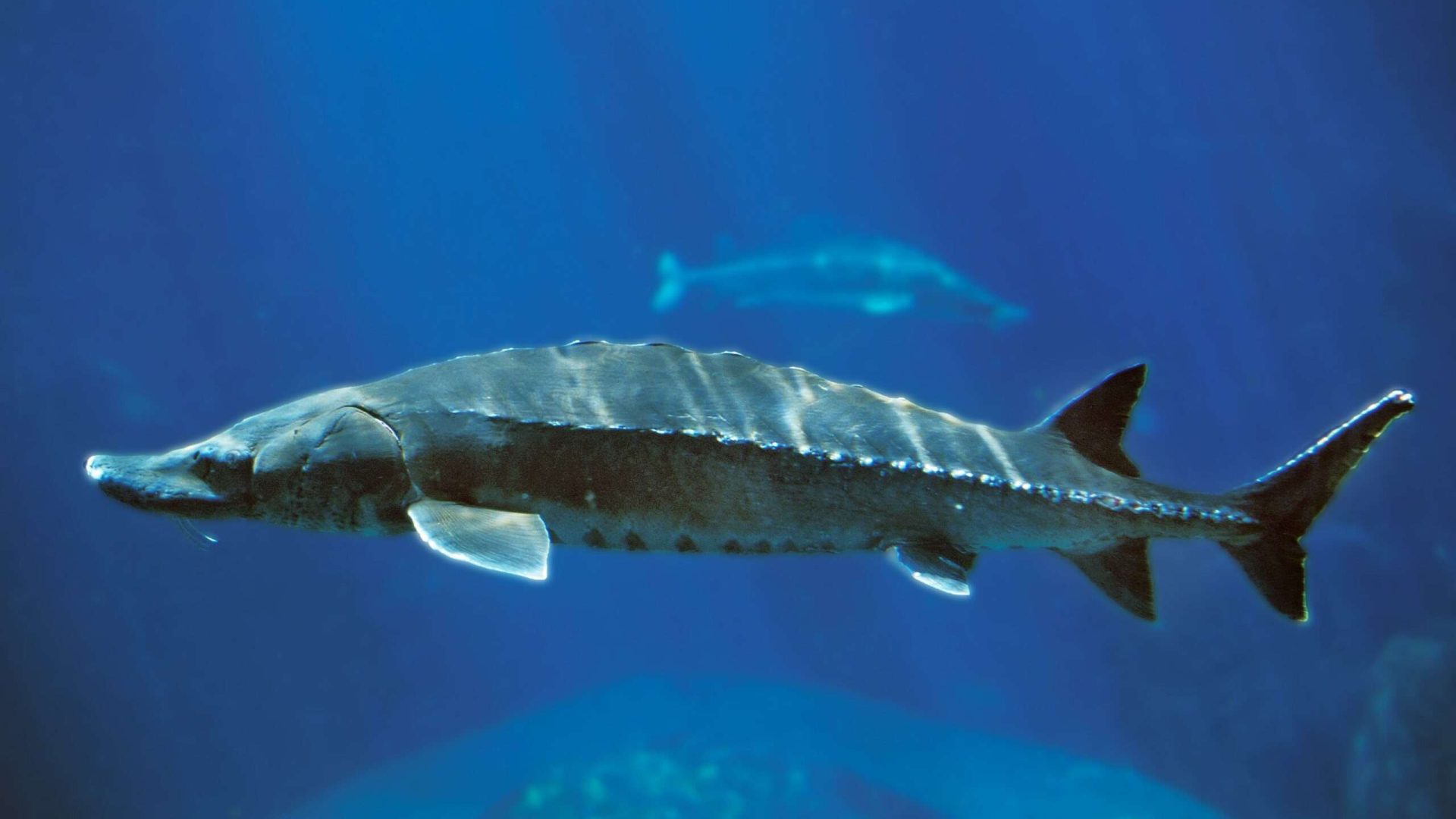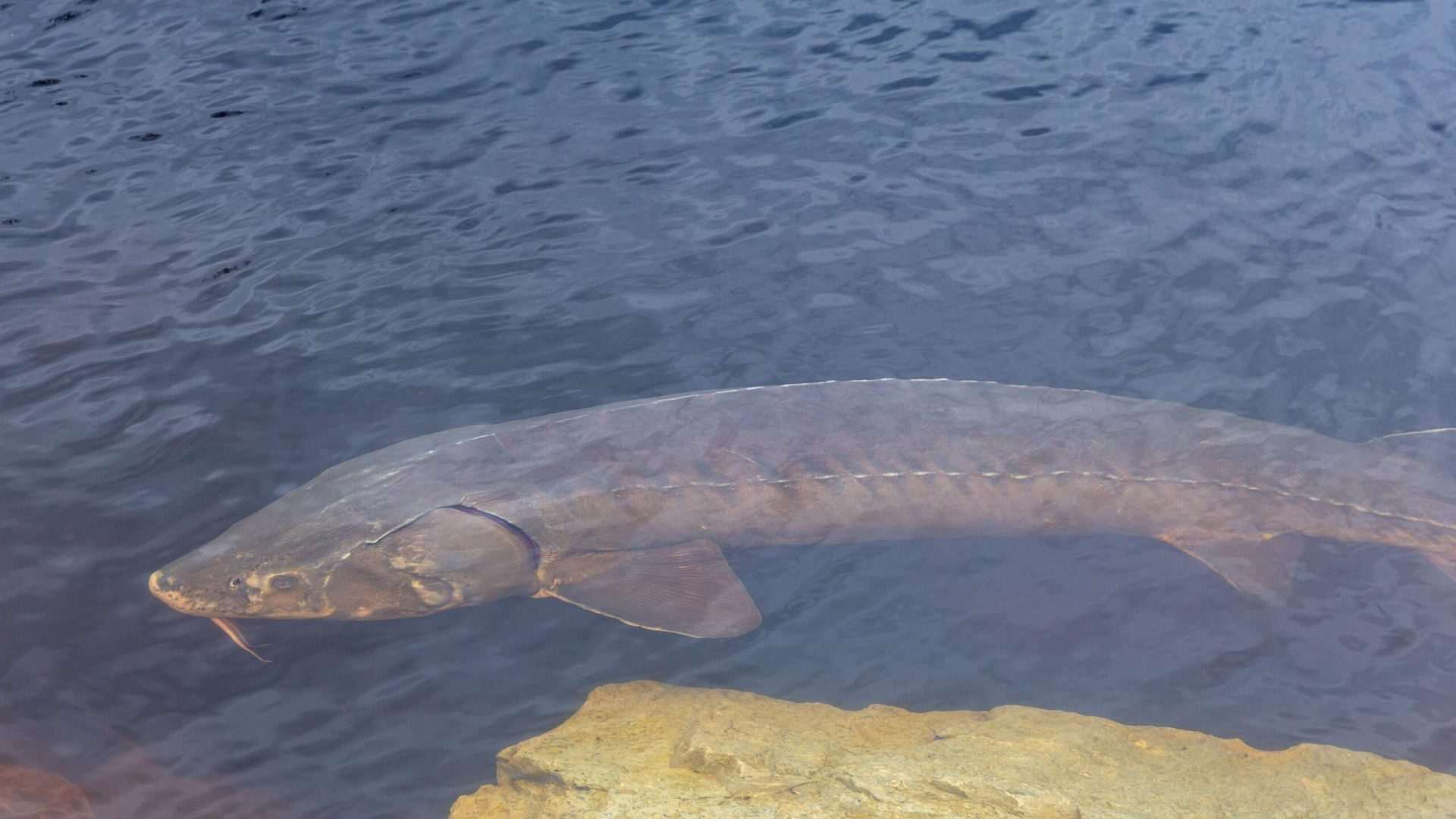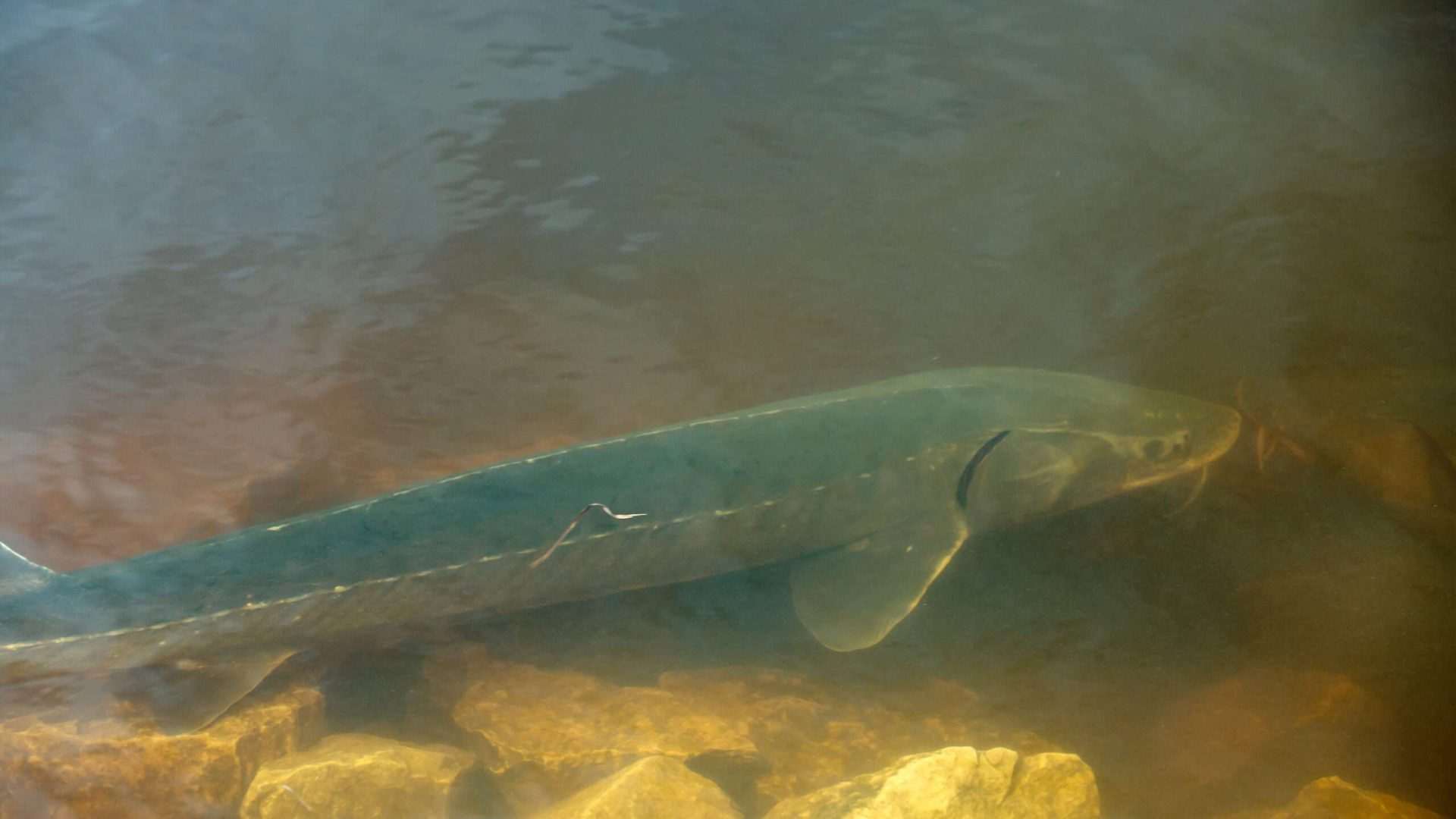Lake Sturgeon
Scientific Name: Acipenser fulvescens
Toxicity Level
About The Fish
Lake Sturgeon
Acipenser fulvescens - scientific name
Lake sturgeon, an ancient fish native to the Great Lakes region, can grow to be more than six feet long, 200 pounds, and live more than 140 years.
Found in Wisconsin's and Michigan inland freshwater fishes, the bottom-dwelling lake sturgeon is a living fossil - a relic from the Middle Ages of fish evolution. This ancient species made its first appearance about 100 million years ago.
19 of the 20 states within the fish's original U.S. range list it as either threatened or endangered. It is considered "Vulnerable" by NatureServe. This sturgeon is a valuable gourmet food fish, as well as a source of specialty products including caviar.
The sturgeon swim dozens of miles on their spawning migrations typically lasts from late April into early June up the in Northern Wisconsin Upper and Lower Fox, Chippewa, Peshtigo and Wisconsin rivers.
The lake sturgeon occurs in the Mississippi, Lake Michigan, and Lake Superior drainage basins. In the Lake Michigan basin, Sturgeon occurs in Green Bay, Lake Michigan, the Menominee River upstream to the White Rapids Dam, the Fox River upstream to Lake Puckaway, and the Wolf River upstream to Shawano.
Illinois, Michigan, New York, and Ohio listed lake sturgeon as imperiled. Minnesota and Wisconsin listed lake sturgeon as vulnerable.
Both Wisconsin and Michigan have a short sturgeon season. There is an across-the-board one sturgeon-per-angler limit for the season, regardless of where it's harvested.
Lake Sturgeon are benthivores meaning bottom feeders, feeding mostly on small invertebrates such as insect larvae, crayfish, snails, clams and leeches.
Lake Sturgeon are without teeth, it's hard for the lake sturgeon to put the bite on anything bigger than the occasional crayfish. Because they rely on suction to feed, lake sturgeon are restricted to living on small organisms - snail, insect larvae, leeches, small clams, and other invertebrates.
American Indian tribes have a close connection with the Sturgeon. According to Menominee tradition, right after creation, one of the first things the Menominee people did was catch sturgeon. The massive fish provided them with sustenance and medicine during harsh Wisconsin winters.
Sturgeons were considered royal of fishes for local native people who lived in the Great Lakes area. In the Ojibwa nation, there is a Sturgeon clan. To the Ojibwa people, the sturgeon represents depth and strength.
Sturgeon has a wonderful flavor and texture that needs little embellishment. The best cooking methods are simple pan frying, searing, baking, or grilling.
Link to State published information on the Lake Sturgeon.
Fishing Season
LAKE STURGEON REGULATIONS MI
All MI-WI Boundary Waters 1st Sat. in Sep. – Sep. 30
Black Lake (Cheboygan & Presque Isle Cos.)
60" minimum size limit. Lake sturgeon less than 60" must be released immediately.
It is unlawful to fish for lake sturgeon, except in the waters listed above.
All other waters all lake sturgeon must be released immediately.
Regulations Michigan fishing Lake Sturgeon.
LAKE STURGEON REGULATIONS WI
Wisconsin - Lake Winnebago, Upriver Lakes, Winnebago system
WI 2023 HOOK AND LINE LAKE STURGEON REGULATIONS
The lake sturgeon hook and line season opens on Sept. 3 and runs through Sept. 30.
The minimum length limit for lake sturgeon harvest is 60 inches.
CATCH AND RELEASE SEASONS
Menominee River downstream of the Grand Rapids Dam to Green Bay - Sept. 3 - Sept. 30
Mississippi River
1) upstream of Red Wing Dam - June 16 - March 1
2) downstream of Red Wing Dam - June 16 - April 14.
St. Croix River downstream from the St. Croix Falls Dam - June 16 - Sept. 2 and Oct. 1 - March 1
St. Louis and Nemadji rivers- June 16 - April 14.
WI STURGEON HARVEST
Anglers need to purchase a harvest tag if they intend to keep a sturgeon. The harvest tag is available throughout the season and costs $20 for residents and $50 for non-residents. Note: You do not need a harvest tag to catch and release sturgeon on waters open to sturgeon fishing during the open hook and line season.
Regulations 2023 WI Sturgeon Fishing
WI Fishing Hook & Line Record
Wisconsin Record PINK SALMON.
Weight – 170 lbs. 10 oz. Length 79.0 Inches.
Date – 00/22/1979
Location Yellow Lake Burnett County.
Outlying waters means Lake Superior, Lake Michigan, Green Bay, Sturgeon Bay, Sawyer’s Harbor and the Fox River from its mouth up to the dam at De Pere.
MI Fishing Hook & Line Record
Michigan Record PINK SALMON.
Weight – 193 lbs. Length 88 Inches.
Date – 1974
Location Mullett Lake Cheboygan County.
LAKE STURGEON 193 88 1974
Michigan Hook and Line Records for Fishing
DNR Master Angler Michigan.gov Program and Map






